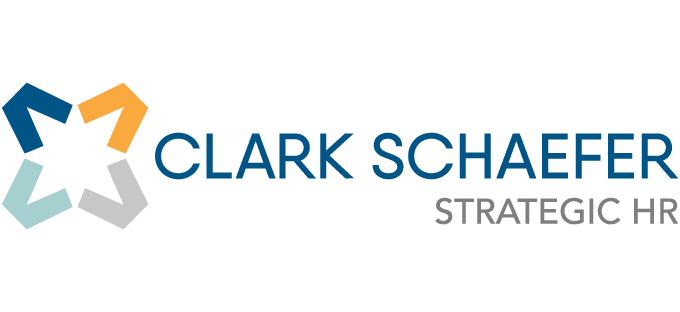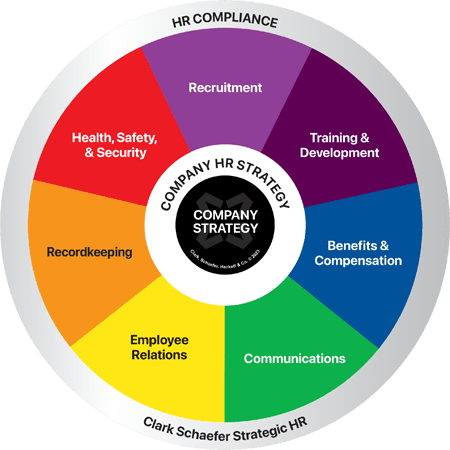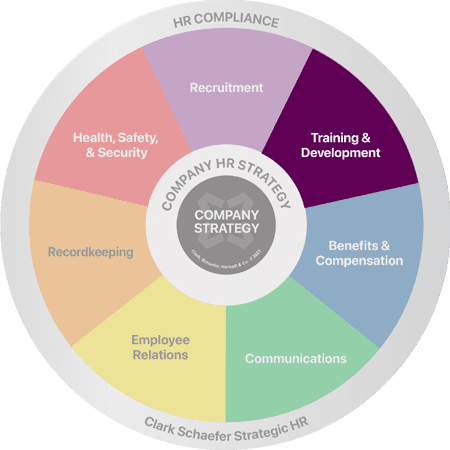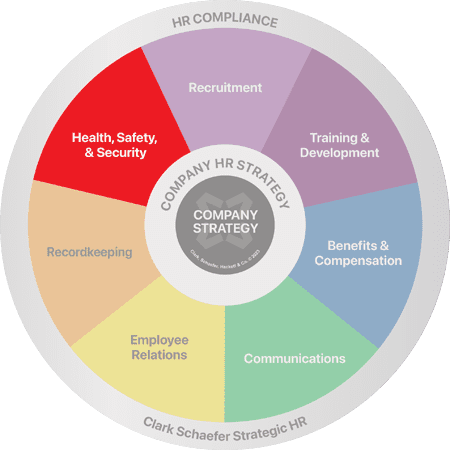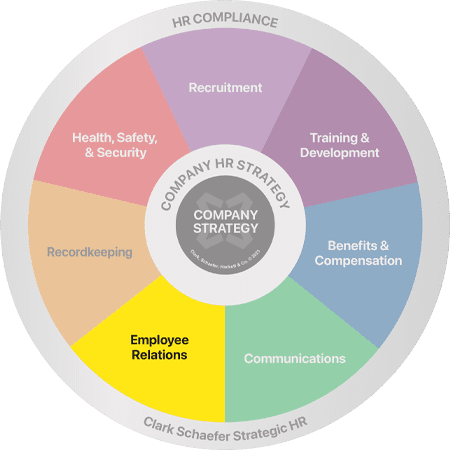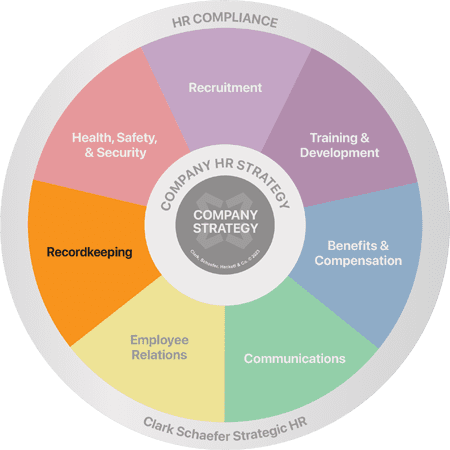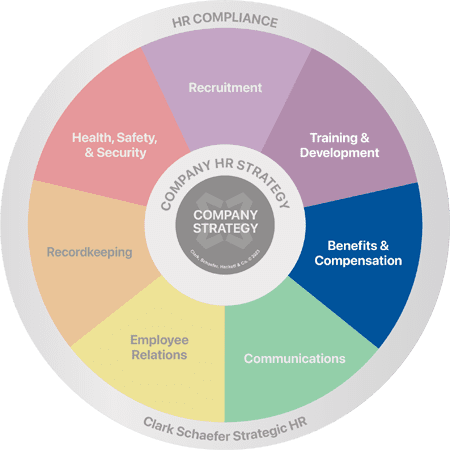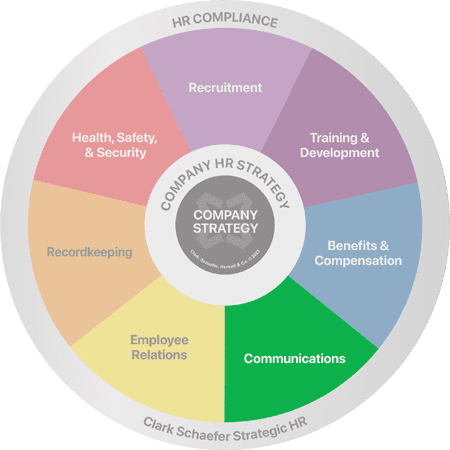by Stephanie Pittman Sullivan, MA, PHR
What you don’t know may be hurting your employees and your bottom line. The prevalence of eating disorders is staggering. Employers may suspect an employee has an eating disorder but not know how to address the problem and be hesitant to do or say anything given today’s legal climate. To make matters worse, typically people who suffer from eating disorders are very secretive and defensive about their illness and the behaviors associated with the disorder. For example, sufferers may eat alone, wear baggy clothes, hide food, binge alone, purge in isolation, and lie about their eating habits. Severe eating disorders tend to pervade all aspects of the person’s daily life (Anderson et al., 2004). The person with a serious eating disorder is unable to leave his/her disease at the door when it is time to start working. This creates complex issues for the individual and management.
A study conducted by Self Magazine in conjunction with the University of North Carolina revealed that an estimated 1 out of 10 women have an eating disorder (anorexia or bulimia) and an additional 65% of women suffer from disordered eating. Disordered eating categories included; chronic dieters, binge eaters, calorie restrictors, food addicts and extreme exercisers. Eating disorders were present in women between the ages of 30 and 40 at the same rate as women in their 20’s. Many women reported spending time obsessing about food with 4% actually thinking about food most of their waking time. The number of men struggling with eating disorders is apparently on the rise as well. Researchers at Harvard University Medical School have new data suggesting that up to 25% of the people with eating disorders are male. Given the prevalence of eating disorders within the population, your company is likely to have employees with serious eating disorders that impact their health and productivity on the job.
The most commonly recognized eating disorders are anorexia, bulimia and binge eating disorder. In anorexia, the person severely restricts their caloric intake and may also exercise to burn off calories. The medical diagnosis for anorexia requires a weight loss that puts the person’s weight 20% below normal weight. Bulimia is marked by the behavior of consuming massive quantities of food followed by self-induced vomiting. Binge eaters consume large quantities of food but do not vomit. A binge eater may diet between binge episodes but remains overweight. Eating disorders can result in a myriad of medical issues. Anorexia can result in heart damage, kidney failure, adrenal failure, thyroid dysfunction, reproductive problems and death. The health risks of bulimia are perhaps even greater. Bulimic behavior can result in heart arrhythmia, esophageal rupture, electrolyte imbalances, dehydration, kidney failure, destruction of tooth enamel, and immediate death. Binge eating disorders often lead to obesity, which increases the risk for diabetes, heart disease, and many other health problems. Eating disorders have the highest mortality rate of all mental illnesses. In addition, the psychological effects of eating disorders can be very damaging.
You might be thinking – so what? Some eating disorders are mild and have little or no impact on job performance. In more severe cases, there is a loss in productivity. The quantity and quality of the work is diminished. The person with a severe eating disorder may experience cognitive and physical difficulties. For example, it is common for anorexics to have reduced physical strength and stamina. They also have difficulty with concentration, memory, staying on task and problem solving. Bulimics and binge eaters may experience disruption in thought processes and difficulty with memory. Those that severely restrict calories between binges may have more serious cognitive difficulties. Preoccupation with food, dieting, and weight are pervasive in all eating disorders. At times the disorder can be so consuming that the person misses deadlines, meetings, or is absent from the job. This is just one reason why it should matter to you!
The Legal Framework:
The litigation surrounding privacy, disability and discrimination make dealing with employee issues more complicated than ever before. Eating disorders are being scrutinized under the ADA and Rehabilitation acts. Recent court decisions have established that an eating disorder may qualify as a disability under the Americans with Disabilities Act depending on the severity, duration and limitations resulting from the disorder.
The Federal Regulations instruct the courts to examine the “nature and severity of the impairment”, the duration or expected duration of the impairment and the permanent or long term impact of or resulting from the impairment” when determining disability. In Toyota Motor Mfg. V. Williams 534 U.S. 184,197 (2002) the Supreme Court interpreted the ADA to include major life activities involved in caring for one’s self. The court stated that to be “substantially limiting the impairment must prevent or severely restrict the individuals’ ability to perform the major life activities alleged.” This case broadened the scope of what was considered in establishing a disability under the ADA. The court stated that “When addressing the major life activity of performing manual tasks, the central inquiry must be whether the claimant is unable to perform the variety of tasks central to most people’s daily lives, not whether the claimant is unable to perform the tasks associated with her specific job.” This landmark decision broadens the scope of inquiry to include activities outside of work in determining whether a person has a disability.
The case of Shalbert v. Marcincin, D.M.D., M.S. (no. 04-5116, 2005) provides insight into the court’s perception of how eating disorders would be covered disabilities under the ADA. The Third Circuit Court acknowledged prior court decisions holding that eating is a major life activity within the ADA statute (Fiscus v. Wal-Mart Stores. 385 F.3d378, 2004, review cases Laweson v. CSX Transportation, Inc. F.3d916, 923 (7th Circuit 2001).
In this case, Ms. Shalbert’s eating disorder was episodic and therefore the evidence failed to meet the standard of being sufficiently severe, permanent, or long-term to qualify as a disability as defined by the ADA. The court stated that “While eating disorders can substantially limit major life activities, [plaintiffs] have not presented evidence that their eating disorder has that effect.” The ADA is applied to eating disorders on a case-by-case basis. The courts are considering the severity, duration and coinciding physical and mental illnesses. The ADA, therefore, requires employers to do an individual assessment for each employee claiming a disability and requesting accommodation.
The EEOC has demonstrated its interpretation of the law regarding persons with disabilities to include people with eating disorders. The EEOC found the Social Security Administration in violation of the Rehabilitation Act for failing to accommodate a person with an eating disorder. In the case, Rowlette v. Social Security Administration, EEOC Appeal No. 01A10816 (Aug. 1, 2003) ” Complainant, a claims examiner with stress-induced eating disorder, could no longer perform an essential function of her job (interviewing members of the public). Agency violated Rehabilitation Act by terminating complainant instead of reassigning her to another available position.”
What can or should an employer do?
The ADA and Rehabilitation Acts prohibit discrimination against a person with a disability in hiring, employment benefits and privileges of employment. The Federal Regulations instruct the courts and employers to examine the “nature and severity of the impairment, the duration or expected duration of the impairment and the permanent or long term impact of or resulting from the impairment”.
Since eating disorders involve private rather than public behavior, assessment can be difficult. If there have been several illnesses or incidents at work (passing out, vomiting, fatigue) you can let the employee know that you are concerned for their health and encourage them to visit their physician. Encourage voluntary participation in a wellness program or Employee assistance program. You should not tell them that you think they have an eating disorder as this may be incorrect and will put you under ADA scrutiny under the “regarded as disabled” clause.
As an employer, your primary focus must remain on job performance and any problems must be addressed directly as with any other employee. Document attendance, work product quality or quantity, including the ability to meet deadlines or performance goals and other observable behavior that causes you to take action or interferes with work productivity. The ability to point to specific areas where there have been changes or problems in job performance can be used to start meaningful dialogue. Be very clear about your expectations for job performance. Set a deadline for improvement and make sure you continue to document performance and meet with the employee periodically to follow up.
Remind the employee that the EAP is available and encouraged if they are having personal problems that are affecting work. You can ask the employee why they think their performance has declined. You can also ask if there is anything they need from the company in order to perform job tasks effectively. The employee may or may not offer any information, but if you suspect an eating disorder you have offered support and informed the employee that their work is being affected by the illness.
As an employer, you are obligated by the ADA to engage in meaningful dialogue regarding reasonable accommodations for a person with a disability. Eating disorders are not static and symptoms may change or fluctuate for many years. It is therefore, important to reassess needs periodically. Communicate with health care providers at predetermined intervals to ensure that the company is making reasonable efforts to keep the employee as part of the productive workforce while encouraging recovery. You may also request the physician evaluate the person’s ability to safety perform job duties. As an employer, you have the right to ensure the safety of employees and others in the work environment. In cases of extreme anorexia, it may be necessary to remove the person from job duties that pose safety risks. You must document the facts that lead to the decision to remove duties. Specifically, the information received from physicians and any work incidents that suggest that there is a reasonable probability of a materially enhanced risk of substantial harm to the health and /or safety of the individuals or others that cannot be eliminated or reduced by a reasonable accommodation.
Accommodations for people with eating disorders are typically not difficult or expensive. The following are some examples of reasonable accommodations:
- Flexible leave for doctor’s appointments
- Allowing a heater in the office
- Permitting breaks for the person to eat small meals
- Flexible scheduling
- Modified job duties
- Ergonomic chair or extra padding
- Allowing telephone calls to support persons
- Open door policy to supervisor
- Reduction in physical exertion
- Allowing work from home
- Providing mechanical assists or lifting aids
Document all of the steps in the disability management process. In the event that a disability discrimination charge is made, your documentation will be your best defense in showing that you have made a “good faith effort” as required by the ADA. It will also help you to follow up appropriately, share information as needed, and clarify the process for the employee.
Depending on the severity of the case as documented by the medical professional, eating disorders may qualify as serious medical conditions under the Family and Medical Leave Act. In many cases, treatment of eating disorders qualifies for leave under the FMLA. The employee may qualify for up to 90 days of leave to receive treatment. Leave may be used intermittently for doctor’s appointments or other treatment (nutritionist, counselor). Employees may have family members with eating disorders and request leave under the FMLA to care for the family member. The stress of having a family member with an eating disorder can also interfere with job performance. Be sure to remind these employees of the services available for support. In addition, many persons with eating disorders have additional psychiatric problems such as anxiety disorders, personality disorders and depression (Milos, Spindler, Buddleberg and Crameri,2003)
Helpful Hints:
- Become familiar with your company’s health plan benefits for treatment of eating disorders. Many health plans provide limited or no coverage for in patient treatment of eating disorders. You can assist the employee in determining what treatment options are covered by your plan.
- If your company has an Employee Assistance Program, request information on eating disorders. Ask for additional resources in your area. Many communities have support groups and educational materials available at no cost.
- Offer free lunch and learn sessions from a nutritionist. This can help people with eating disorders to learn about their body’s real needs versus all the information on dieting. It can be helpful for prevention as well.
- When an employee reveals their eating disorder; listen, offer support, and acknowledge their pain and suffering. Let them know they are valuable. Offer resources. “You are such a talented ____ and have such a great _____, the company really values your contributions and we would like to support you in your recovery. It sounds like you are having a hard time getting out of this destructive pattern of behavior, you aren’t alone and our EAP would be happy to help you find appropriate treatment.”
- Bulimics and binge – eaters often feel ashamed and embarrassed by their overeating and/or subsequent purging. It is important to approach any type of eating disorder with a non-judgmental tone.
- Do NOT focus on food or weight. These are merely symptoms of the underlying problems. You want to stay away from any discussions about calories, what the person ate etc… This is not helpful to the person.
- Disclosure of the illness must be limited to supervisors and managers on a need to know basis. Offer information on the illness to the direct supervisor. Instruct the supervisor to inform Human Resources if he/she witnesses signs of the condition worsening.
- Offer healthy food options at meetings and training sessions. Typically people with eating disorders will have less difficulty eating foods that are low in calories and fat. Instead of donuts or chips, try serving fruit, whole grain bagels, vegetable trays and pretzels.
Unfortunately, the statistical outcomes of treatment programs are not very good, reporting only a 20% rate of full recovery. Early treatment intervention improves the likelihood of a full recovery. Many people continue to struggle with some form of eating disorder for many years. Interestingly, many people treated for anorexia go on to develop bulimia. If you have an employee who regains weight after treatment for anorexia, do not assume that the problem is resolved. The symptoms may merely have changed.
Eating disorders have become widespread in our society. Human resource professionals need to familiarize themselves with these illnesses, how they may affect their workforce and productivity, and how the courts are applying existing employment laws to cases in which the employee has an eating disorder. Managers should receive training in how to appropriately and legally deal with these issues in order to increase the productivity of the organization. While employers certainly cannot eliminate eating disorders, they can take steps to encourage a healthy diet and exercise regime through wellness programs and their employee assistance program. With the rising cost of health care, it only makes good business sense to be proactive in creating a culture of health and encouraging early treatment for eating disorders.
There is very limited data on how the prevalence of eating disorders is affecting the workplace. Information is anecdotal and sparse. For example:
- An employer reports having an employee who began “fainting at work, and sometimes missing work altogether. She was also appearing not to hear instructions and other verbal communications altogether. She had become extremely thin and in fact once tripped over her drooping pants legs while walking down the hall. After several discussions she finally admitted to me that she had not eaten anything for nine weeks. This employee eventually returned to work, but only after being on both STD and LTD leaves (both of which were approved by the providers).”
- “Our reliable accounting assistant started missing work, seemed to have difficulty concentrating and was making errors. I didn’t realize our accounting assistant was starving herself until she was well below normal weight. When I spoke to her, she told me she had been dieting and that she was significantly overweight when her quest for thinness began a year ago. The problem was, she was significantly underweight at 90 some pounds. She was having difficulty sleeping. She had begun to have blackouts and days that she couldn’t get out of bed. She was cold all the time and it hurt her to sit on hard surfaces. She was having trouble in school because she could not focus on her studies. She said she was thinking about seeing a doctor because she was a little scared because she had been having blackouts. She was afraid to tell the doctor about her dieting because she didn’t want to go back to being fat. I was able to convince her to call her doctor immediately. She was dehydrated and 80% below normal body weight. The doctor shared information with her about the eating disorders, the health risks and the treatment options. He recommended treatment professionals and insisted she work with a dietician and have weekly visits to check her weight and health status. She began treatment but was hospitalized a month later because she had lost more weight. She returned to work 6 weeks later. She needed accommodations to help her continue in recovery. She had weekly appointments with therapist, nutritionist, and her doctor. She also needed additional breaks to eat small snacks. She was unable to eat large meals so it was important that she eat frequently. We purchased a cushion for her chair. She used a small heater in her office. She gained weight and her energy level improved. Most of the accommodations were no longer necessary. Her job performance was flawless. She left a year later to go to graduate school.”
- Professional sales person claims to be on sales calls while actually going to the gym. This person had panic attacks after eating and would leave work to vomit.
- Employee at large natural foods store binges while restocking and cleaning up aisles. She steals up to $20.00 a day in food. She misses work after “bad binge days”.
- Reporter misses important interview for national publication because she stopped at bakeries to binge on donuts while on her way to the meeting.
Examples of accommodation:
- A waitress with anorexia was allowed to leave when business slowed down in the evenings. Although the rule was that food purchased at an employee discount must be eaten on the premises, the owners permitted her to take her meals home since she had difficulty eating in public.
- A business professional started work at 9:00 am rather than 8:00 am while physically adapting to a new medication that increased drowsiness. She had chair cushions for her chair and a space heater in her office. She used intermittent FMLA to go for outpatient treatment. She also left work early on Wednesdays to attend a support group.
- An accommodation that enabled: An employee was permitted to come into work as late as 10:30 am so she could exercise in the morning. Although the employer was well intentioned, this enabled the person to keep the eating disorder as the priority in her life while the business suffered.
In addition to changes in weight, there are other warning signs you may notice such as:
- Eating behaviors:
- The person skips meals or takes only tiny portions
- Avoids fat in foods
- Drinks diet soda, cofee and water exclusively
- Hides or hoards food
- Eats very large quantities or has meticulous rituals around eating
- Physical symptoms:
- Weight loss is a sign of anorexia
- Weight changes may or may not be seen in people with bulimia
- Binge Eating Disorder typically results in a higher than normal weight
- Bulimic individuals may have the following symptoms on top of weight difference:
- Redness round the Eyes
- Swollen Glands and/or Face
- Lacerations on the Knuckles and Fingers
- Dark Circles under the Eyes
- Tooth Decay
- NOTE: Be aware that there are many reasons why a person may have weight changes or be out of the normal weight range. Do not assume that because someone is over or under weight that they have an eating disorder.
Stephanie Sullivan Pittman, MA, PHR is an independent consultant that has worked with Strategic HR. If you’d like additional real live examples with suggested accommodations, you may contact us at info@strategicHRinc.com.

